In this statement on the economic response to coronavirus, ICA group describes reasons why employee ownership, which helps stabilize workers, businesses and communities, is an important business model to consider during the COVID-19 response. It especially focuses on employee ownership as a pathway to supporting low income workers of color disproportionately impacted by the pandemic. The document identifies policy responses to help expand employee ownership models and may be particularly useful for employers, advocates, and economic development organizations.
This corporate response tracker aggregates ways the US’ largest businesses responded to the coronavirus crisis, with links to more specific descriptions of the policies implemented. Employers, practitioners and policymakers alike may find this tool useful in looking back at the impact and response to the outbreak of COVID-19 and in identifying policies that can support workers in similar public health emergencies. See Just Capital’s additional resources for examples of businesses centering worker interests in their coronavirus responses.
This set of principles provides guidance for COVID-19 policy responses that center equity and longer-term stability and prosperity–which remains relevant in the context of COVID-19 recovery and as a resource for understanding community needs after societal shocks. Policymakers and practitioners seeking to support workers and job quality may be particularly interested in the sections at the bottom of the page related to investing in community infrastructure and building an equitable economy.
This white paper provides a primer on open-book management, an approach to sharing financial information with workers to strengthen decision-making. Topics covered include the basics of open-book management, benefits and challenges associated with this strategy, and actionable steps that companies can take to apply open-book management in their business. This resource may be particularly helpful for employers and business support organizations interested in strengthening employee engagement and involving workers in a broader range of decisions.
This research report offers an overview of labor trends and systemic barriers to employment to contextualize Black women’s current economic and occupational status. The authors explore the history of Black women’s economic mobility; how occupational segregation, discrimination, and stereotypes impact Black women’s experiences in the labor market; and offer recommendations aimed at increasing economic equity. This resource may be of particular interest to individuals and organizations focused on learning about or addressing systemic barriers to race and gender equity in the labor market.
The Employer Engagement Question Bank is designed to help workforce professionals engage in conversations with businesses to support the job seekers they work with. This tool can be used to learn about a business with an eye toward providing workforce services, developing expertise about industry norms and practices, and building relationships that build credibility in discussions about strategies for promoting worker retention and advancement. The tool includes questions to build understanding of the business, its workforce needs, and a range of job quality factors including compensation, opportunities for advancement, and equity and inclusion. Workforce development practioners and other professionals who support workers can adapt the tool to meet their employer engagement goals.
This report examines definitions and research on job quality and provides a job quality framework based on findings. It focuses on job quality elements with the potential to support economic mobility. Designed to provide common ground for discussions around job quality, this report may be useful for practitioners and employers interested in exploring job quality frameworks and the link between job quality elements, worker well-being, and upward mobility.
This report addresses worsening job quality during the COVID-19 pandemic, using data from the 2020 Great Jobs Survey and building on the 2019 Great Jobs report. Among other insights, the report addresses how COVID-19 had a differential impact on high wage versus low wage workers, how job quality before the pandemic predicted job quality changes during the pandemic, and how COVID-19 has created new job quality challenges, such as increased remote work.
This report includes 23 practices to embed racial equity into your organization by developing, recognizing, and promoting frontline employees of color. Employers and practitioners can use this resource to structure and implement equitable policies for advancement to strengthen their business.
This resource provides guidance on language to help organizations more effectively communicate about racial economic equity. This document includes definitions of important terms and concepts for understanding racial economic equity, the racial wealth divide, and racial wealth equity as well as design guidelines on visually depicting diverse communities. This guide has relevance for a range of organizations interested in communicating about the important link between racial equity and job quality for those who want to advance racial equity.
